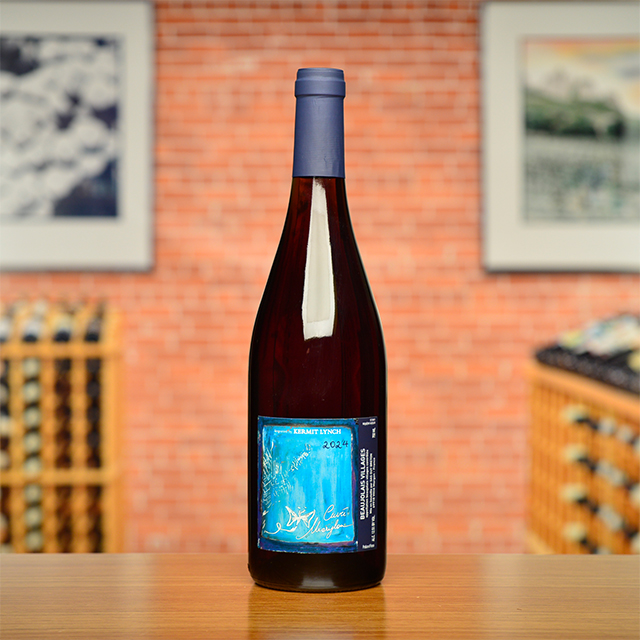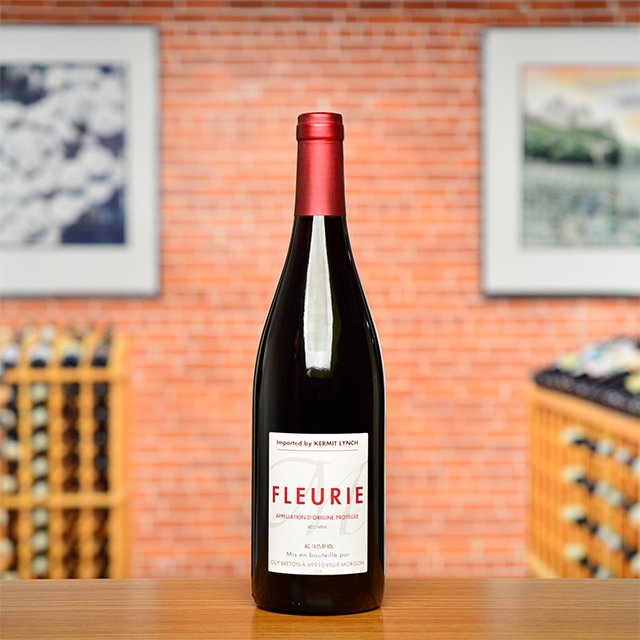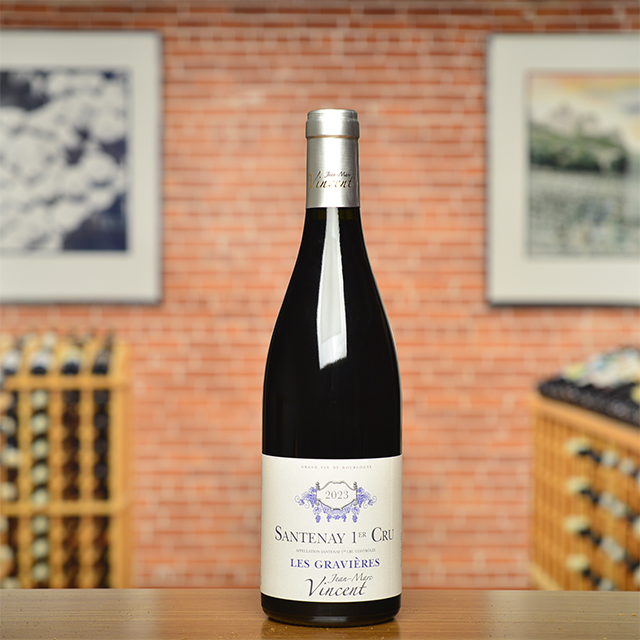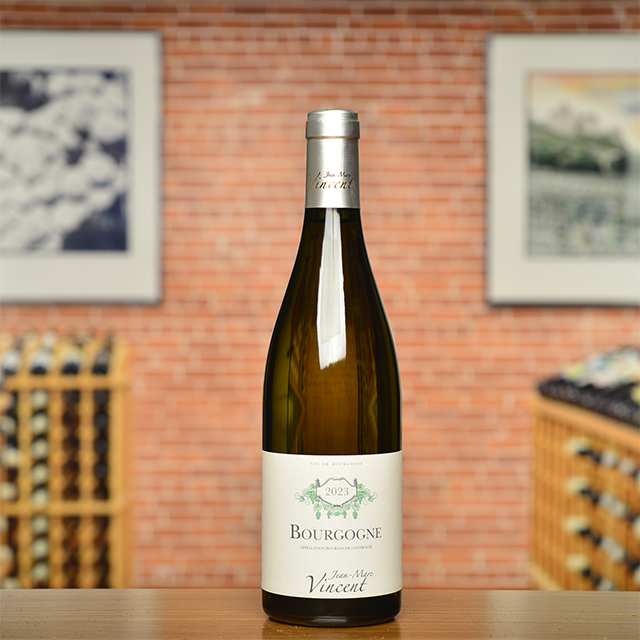Notify me
2018 Beaujolais-Villages “Marylou”
Guy Breton
I don’t like tannins. I never imagined I would hear a winemaker utter such words, much less one who produces only red wine. But Guy Breton is not shy about his preferences, and he crafts wines aiming to please himself—and possibly some buddies with whom to share a couple bottles and a plate of charcuterie. Marylou, named for his eldest daughter, epitomizes his taste for lithe, perfumed reds with low alcohol that can be glugged down effortlessly. Juicy, fruit-driven, and full of joyous energy, it has little tannin to speak of—nothing to grab hold of your palate as it passes over, making it all too easy for it to slide right down the hatch.
—Anthony Lynch
| Wine Type: | red |
| Vintage: | 2018 |
| Bottle Size: | 750mL |
| Blend: | Gamay |
| Appellation: | Beaujolais-Villages |
| Country: | France |
| Region: | Beaujolais |
| Producer: | Guy Breton |
| Winemaker: | Guy Breton |
| Vineyard: | 45 years, 0.5 acres |
| Soil: | Granite, Rocks |
| Aging: | Wines are aged on fine lees in Burgundian barrels |
| Farming: | Organic (practicing) |
| Alcohol: | 11.5% |
More from this Producer or Region

2024 Beaujolais MAGNUM
France | Beaujolais
This Beaujolais offers the drinkability of the most effusive Morgons with the frankness of a chiseled Moulin-à-Vent.

2025 Beaujolais Nouveau
France | Beaujolais
Limited Quantities! ~ Valentin Montanet’s rendition has guts, but it sure is kickin’, too, with loads of cherries and heaps of joy.

2023 Morgon “Vieilles Vignes”
France | Beaujolais
** New Wine Added ** Leave it to Breton to take summer heat and turn it into a light summer breeze in a glass.

2024 Beaujolais-Villages “Cuvée Marylou” MAGNUM
France | Beaujolais
French psychoanalyst Jacques Lacan says nostalgia is the longing for a past that never was. But, hand to god, this year's Cuvee Marylou tastes just like the raspberry thumbprint cookies my mother used to make for Christmas.

2024 Chiroubles “Cuvée Léa”
France | Beaujolais
Floral and succulent, bursting with notes of little red berries, but it is also delicate and light on its feet.

2022 Côte de Brouilly
France | Beaujolais
A relatively new addition to Guy Breton’s Beaujolais lineup, this exuberant Côte de Brouilly is flat-out delicious.

2024 Beaujolais-Villages “Cuvée Marylou”
France | Beaujolais
French psychoanalyst Jacques Lacan says nostalgia is the longing for a past that never was. But, hand to god, this year's Cuvee Marylou tastes just like the raspberry thumbprint cookies my mother used to make for Christmas.

2024 Fleurie
France | Beaujolais
Guy Breton’s Fleurie is delicate, with buffed tannins and juicy fruit; it will leave your thirst slaked and your heart feeling light.

2024 Beaujolais-Villages
France | Beaujolais
This drinks like a Gamay infusion with lovely hints of potpourri, spice, and fresh grapes.

2022 Régnié
France | Beaujolais
Savor it while you can, because your glass will be empty before you know it, leaving you only with the spicy, mineral-laden aftertaste of a bottle that went down way too easily.
About The Producer
Guy Breton
About The Region
Beaujolais

After years of the region’s reputation being co-opted by mass-produced Beaujolais Nouveau and the prevalence of industrial farming, the fortunes of vignerons from the Beaujolais have been on the rise in the past couple of decades. Much of this change is due to Jules Chauvet, a prominent Beaujolais producer who Kermit worked with in the 1980s and arguably the father of the natural wine movement, who advocated not using herbicides or pesticides in vineyards, not chaptalizing, fermenting with ambient yeasts, and vinifying without SO2. Chief among Chauvet’s followers was Marcel Lapierre and his three friends, Jean Foillard, Guy Breton, and Jean-Paul Thévenet—a group of Morgon producers who Kermit dubbed “the Gang of Four.” The espousal of Chauvet’s methods led to a dramatic change in quality of wines from Beaujolais and with that an increased interest and appreciation for the AOC crus, Villages, and regular Beaujolais bottlings.
The crus of Beaujolais are interpreted through the Gamay grape and each illuminate the variety of great terroirs available in the region. Distinguishing itself from the clay and limestone of Burgundy, Beaujolais soils are predominantly decomposed granite, with pockets of blue volcanic rock. The primary vinification method is carbonic maceration, where grapes are not crushed, but instead whole clusters are placed in a tank, thus allowing fermentation to take place inside each grape berry.
Much like the easy-going and friendly nature of many Beaujolais vignerons, the wines too have a lively and easy-drinking spirit. They are versatile at table but make particularly good matches with the local pork sausages and charcuterie. Though often considered a wine that must be drunk young, many of the top crus offer great aging potential.
More from Beaujolais or France
2024 Beaujolais
Domaine Dupeuble France | Beaujolais
2023 Morgon “Cuvée Corcelette”
Jean Foillard France | Beaujolais
2023 Morgon “Vieilles Vignes”
Guy Breton France | Beaujolais
2024 Côte de Brouilly MAGNUM
Château Thivin France | Beaujolais
2024 Morgon “Vieilles Vignes”
Jean-Paul et Charly Thévenet France | Beaujolais
2025 Beaujolais Nouveau
La Sœur Cadette France | Beaujolais
2024 Beaujolais “Le Beaujolais”
M. & C. Lapierre France | Beaujolais
2022 Côte de Brouilly
Guy Breton France | Beaujolais
2023 Beaujolais-Villages
Jean Foillard France | Beaujolais
2024 Vin de France Rouge “Raisins Gaulois”
M. & C. Lapierre France | Beaujolais
2024 Fleurie “Les Moriers”
Domaine Chignard France | Beaujolais
2021 Brouilly
Alex Foillard France | Beaujolais
2024 Beaujolais
Domaine Dupeuble France | Beaujolais
2023 Morgon “Cuvée Corcelette”
Jean Foillard France | Beaujolais
2023 Morgon “Vieilles Vignes”
Guy Breton France | Beaujolais
2024 Côte de Brouilly MAGNUM
Château Thivin France | Beaujolais
2024 Morgon “Vieilles Vignes”
Jean-Paul et Charly Thévenet France | Beaujolais
2025 Beaujolais Nouveau
La Sœur Cadette France | Beaujolais
2024 Beaujolais “Le Beaujolais”
M. & C. Lapierre France | Beaujolais
2022 Côte de Brouilly
Guy Breton France | Beaujolais
2023 Beaujolais-Villages
Jean Foillard France | Beaujolais
2024 Vin de France Rouge “Raisins Gaulois”
M. & C. Lapierre France | Beaujolais
2024 Fleurie “Les Moriers”
Domaine Chignard France | Beaujolais
2021 Brouilly
Alex Foillard France | Beaujolais
Kermit once said...

Kermit once said...
A good doctor prescribed the wine of Nuits-Saint-Georges to the Sun King, Louis XIV, when he suffered an unknown maladie. When the king’s health was restored the tasty remedy enjoyed a vogue at court. Lord, send me a doctor like that!
Inspiring Thirst, page 117
















